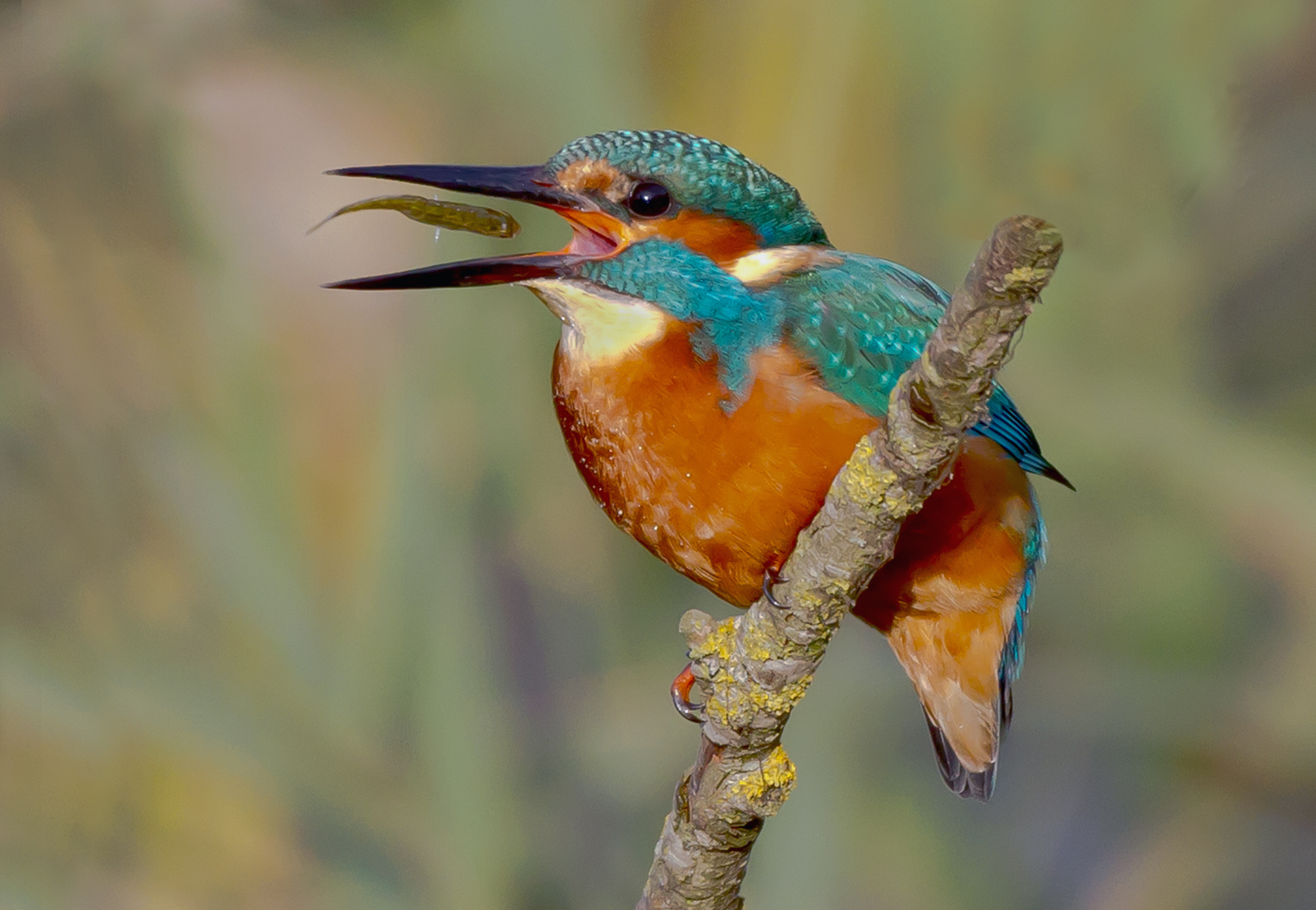I came in search of kingfishers but ended up studying their prey instead. Why? Well, I had been somewhat perplexed by the apparent scarcity of kingfishers on my local stretch of the River Devon.
In previous summers, I would regularly see these electric-blue missiles zooming up and down the river – but this year they have been absent. Perhaps, they were further downstream where the water flow is slower and small fish easier to find?
So, that’s where I ventured. The bankside vegetation was thick with Himalayan balsam, but I found a clearing and sat awhile by the gentle flowing water. In the shallow margins I could see a small fish tinged with red and blue. It was too far away to examine in detail with the naked eye, so I stepped back a bit so as to bring the wee fish into focus through my binoculars.
It was a male three-spined stickleback and what a fine looking fish too, resplendent in full breeding colours with a bright red throat and underbelly, a blue splash on the gill covers and iridescent green back. Although I couldn’t see any structure, somewhere nearby would be his tunnel-like nest constructed out of small plant fibres and bound together by sticky threads.
This was a stickleback with only one thing on his mind – to entice a female into this intricate little cocoon to lay her eggs. He does so by engaging in an elaborate zig-zagging courtship display where he shows off his striking colours like some miniature underwater peacock.
After the eggs have been deposited and fertilised in the nest, he will guard them like a hawk, fanning water over the precious clutch with his fins to ensure they are well oxygenated. Once hatched, the plucky male will continue to guard the fry until they have absorbed their yolk sacs and disperse.
The breeding season is a dangerous time for male sticklebacks, and whilst the three erectile spines on their backs will offer some protection, kingfishers still seem able to swallow these fish with ease.
I waited for a bit longer, but there was no sign of any kingfishers, so I made for home. As I traced my way along the bank edge I saw several dippers on the faster flowing stretches, which reminded me that they too are potential predators of sticklebacks, although I’m not sure how easily they could cope with the spines.
Earlier in the year I watched a dipper with a minnow it had caught. The dipper perched on a half-submerged tree branch by the side of the bank and repeatedly shook the small fish in a bid to disable it before swallowing.
Several times the dipper dropped the minnow into the water – its beak not really designed for grasping a slippery fish – but each time the bird plopped back into the river and retrieved it. This minnow would prove a nutritious meal and the dipper certainly had no intention of letting it go.
Info
The three-spined stickleback is an adaptable fish that also occurs in estuaries and tidal rock pools. These marine living sticklebacks tend to be larger than those found in freshwater.










